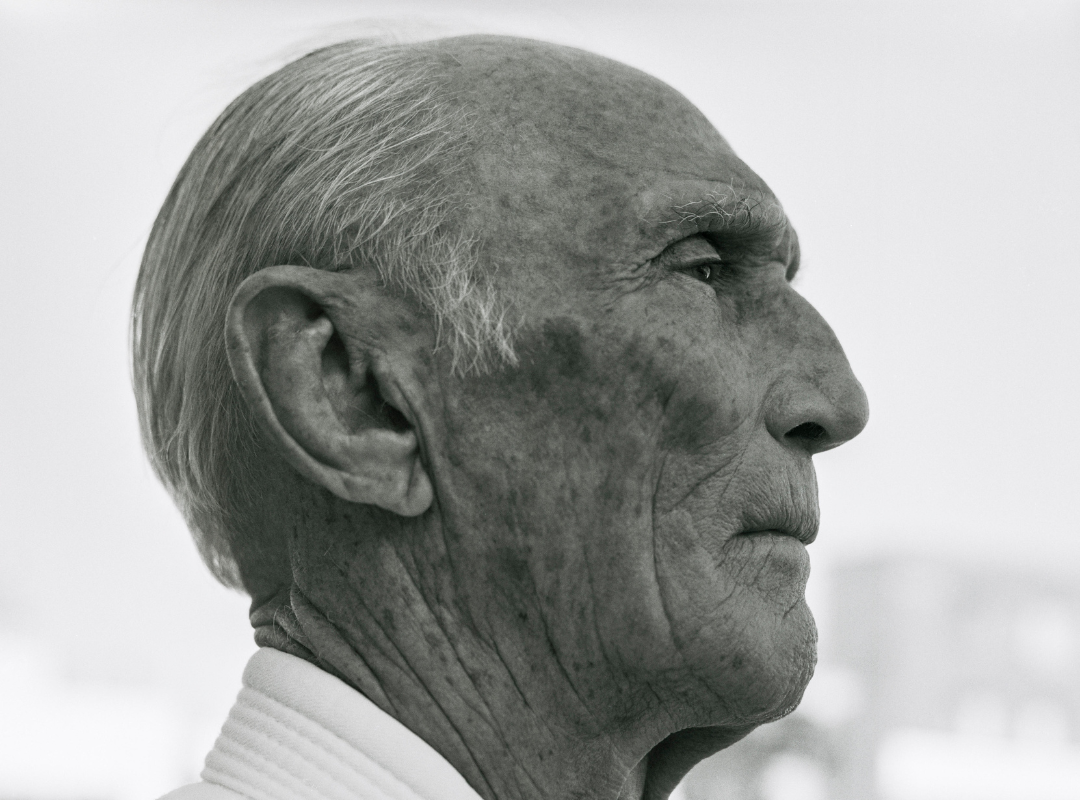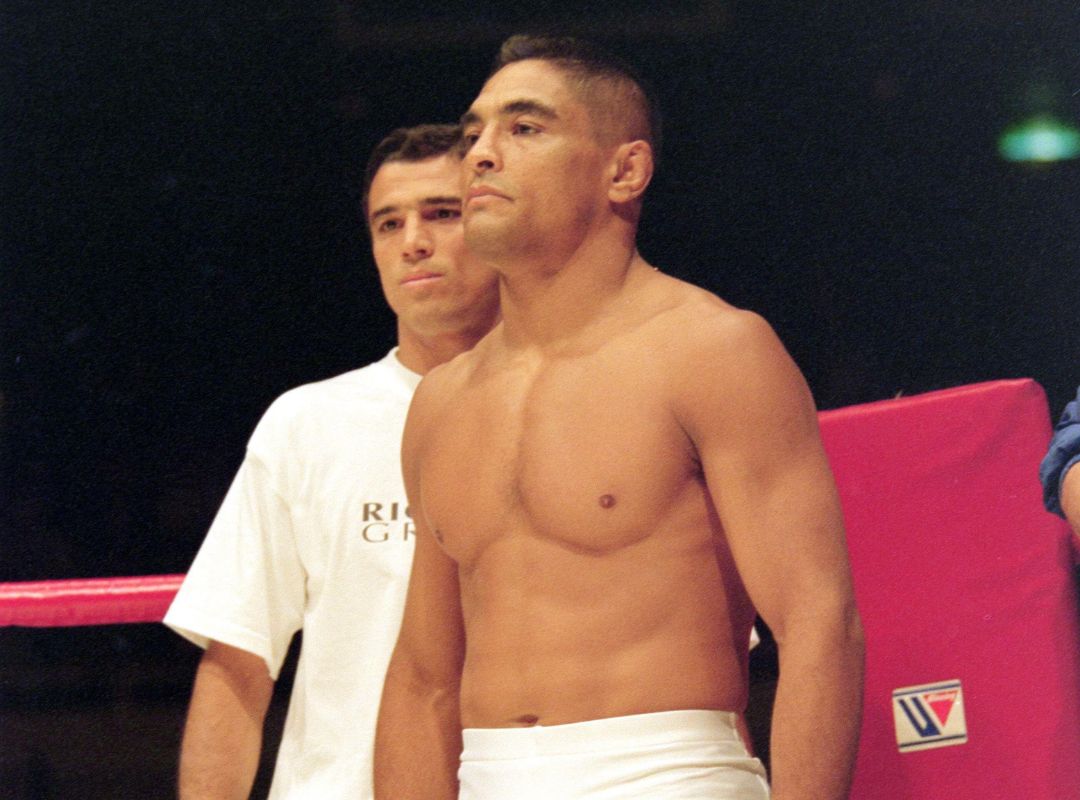
The gentle art: Jiu Jitsu
Especially in the last few years one martial art has become more and more popular: Jiu Jitsu. At the latest when Royce Gracie won the final of UFC 1 as a representative of Jiu Jitsu, it was hard to imagine the still young MMA without this martial art. In fact, the origins of Jiu Jitsu can be traced back much further.
However, it is difficult to pinpoint an exact date or country of origin. The first records can be found in ancient Babylonia, where men wrestled with each other. Other sources suggest different origins in China, Persia, or even Egypt.
First beginnings in Japan
The first more concrete indications appear in feudal Japan. The name “Ju Jutsu” is composed of the Kanji characters for “Ju” (gentle, soft) and “Jutsu” (art, ability) and can be translated as “gentle art”. Fitting, since it is indeed one of the basic principles of Jiu Jitsu to yield and use the opponent’s own strength against himself.
At the time of Japan from the 7th to the 11th century, the so-called Heian period, it was part of the standard repertoire of every warrior to master techniques of unarmed self-defense. It is therefore hardly surprising that it was the samurai who were instrumental in the development of the martial art known to us today as Jiu Jitsu. They were also the ones who incorporated the philosophical origins of Buddhism and Taoism into this form of self-defense. One of these principles is the triumph of compliance over stubbornness mentioned at the beginning of this article. An anecdote from Japan compares this to the snow-covered branches of a tree: while the thick, strong, rigid branches succumb to the weight of the snow and eventually break, the thinner branches bend until the snow slides off them and they rise again unharmed.
Since Japan from the 8th to the 16th century was strongly marked by civil wars, there was a great demand for techniques of self-defense, at the same time they could be applied in practice, tested, developed and discarded. However, little else is known about the whereabouts of Jiu Jitsu during this era. Naturally, many teachers kept their techniques under lock and key so that the enemy could not adapt to them.
With the advent of the Edo period, more peaceful times arrived in 16th century Japan. Under the rule of the Tokugawa shogunate, Japan experienced a period of peace lasting more than 250 years until 1867. Despite this peace, the motto was “Live in peace and remember war” and various martial arts, including Jiu Jitsu, spread throughout the country. The traditions of the samurai offered them to learn various techniques of self-defense and to deepen this knowledge.
However, in the 1860s, under the so-called Meiji Restoration, the country experienced an upheaval in which the feudal-military system of government, and with it the social status of the samurai, was abolished.
The Japanese people were finally disillusioned, the traditions of martial arts and the “Bushido”, an ethical code of conduct of the warrior caste, were now looked down upon with contempt. Without these influences, many warriors, until then usually the only ones training Jiu Jitsu, succumbed to gambling and alcohol.
Reformation and change to Judo
A change in the image of the martial art became necessary. This came with the intellectual Jigoro Kano (1860 – 1938), who developed the techniques into Kano Ju Jutsu and later into Kodokan Judo. However, since he was not devising a new martial art, he decided to drop the negatively-afflicted “jutsu” from the name, replacing it instead with the Japanese word for “way, doctrine” (Do). In addition to a strict moral code that emphasizes discipline and mutual respect, a training session according to Kano consists of technical training (kata) and randori (sparring). This practice was so successful that within a short time it was incorporated into military and police training, as well as into the public school system. In the 1920s, Kano increasingly feared a shift from the code of honor he had established to a winner’s mentality. He was specifically concerned about a reduction in the effectiveness of his martial art. To counteract this, he increasingly shifted the focus of judo from ground techniques to throwing and even striking techniques. Time was to prove Kano right: Decades later, competition rules would severely limit the actual self-defense capability.
The arrival of the martial art in the West
Toward the end of World War II, judo reached the United States, among other countries. Numerous G.I.’s had been stationed in Japan during the war and thus came into contact with Judo. At the end of the war, they brought Judo with them to the United States, where this martial art quickly enjoyed growing popularity. From businessmen to housewives, an ever-growing audience quickly wanted to learn Judo. Judo and Jiu-Jitsu experts traveled the world, successfully competing against boxers and wrestlers, and impressively demonstrating how even a physically inferior fighter can effectively use his opponent’s strength against himself and emerge victorious in a fight.
Influence of the Gracie Family
In 1914, Jiu Jitsu reached the South American continent with Mitsuyo Maeda, a former student of Kano. After fighting in Europe, the United States, Cuba and Mexico, among other places, he finally settled in Brazil. It was here that he would eventually meet Gastāo Gracie, a local businessman and fight promoter. The latter’s eldest son Carlos was so impressed by Maeda’s skills that he decided to train at Maeda’s school until he moved to Rio de Janeiro in 1922. After that, Carlos did not train again until 1928, at the suggestion of one of Maeda’s students, Donato Pires dos Reis, who also founded his own academy. In 1932, the Gracie brothers, namely Carlos, Oswaldo, Hélio and Gastāo, took over this academy after Donato left Rio de Janeiro. Carlos in particular was the driving force behind the success of the Gracies and Jiu Jitsu in Brazil: an avid student and businessman, he read every book he could find on nutrition, training, and the like.
In addition to their training, Carlos and Hélio continued to travel the country, competing against many different martial artists to showcase the effectiveness of Jiu Jitsu. In 1952, Carlos and Hélio founded a modern academy together in Rio de Janeiro, where later Carlson and Robson Gracie were among the first to receive a professorial diploma.
Thus, Carlos and Hélio eventually became pioneers of Jiu Jitsu as it is known to us today. Their lifelong efforts brought great fame not only to the Gracie name, but also to Jiu Jitsu.




